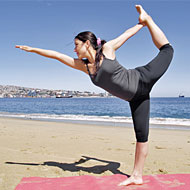- Aromatherapy (36)
- Benefits of Yoga (282)
- Home Remedies (1087)
- massage therapy (9)
- Preventive Therapy (135)
- Running (41)
- Skin Care (15)
- Stress Relief (25)
- Stretching (5)
- walking (33)
- Womens Health (14)
- Yoga Benefits for Pregnant Women (16)
- Yoga Benefits for Students (3)
- Yoga for Children (11)
- Yoga for Holistic Living (37)
- Yoga for Midlife Crisis (3)
- Yoga for Senior Citizens (2)
- Yoga for the Workplace (1)
- Yoga Health Tips (185)
- Yoga Practice during Menstruation (5)
How To Reduce The Severity of Achalasia Cardia With Regular Yoga?

Achalasia Cardia is a disorder that affects the sphincter muscles of the esophagus. The esophagus, or food canal, carries food from our mouth to our stomach. This canal is lined with sphincter muscles. These sphincter muscles prevent the acidic content of the stomach from flowing back into the esophagus, and also facilitate the passage of food from the esophagus to the stomach. In patients suffering from Achalasia cardia, the sphincter is unable to relax. This means that although there is food in the esophagus, the sphincters do not open to allow the passage of food into the stomach. This translates into a difficulty in swallowing.
This disease is caused due to a degeneration of nerve cells connecting the brain with the esophageal sphincter. When these cells are damaged, the brain is unable to tell the sphincter to relax. Although the root cause behind this degeneration is unknown, it is suspected that it may be caused due to an autoimmune disease.
In addition to dysphagia (difficulty in swallowing), the other symptoms associated with Achalasia cardia include chest pain, heartburn, cough, and recurrent pneumonia.
Treatment: There are a couple of treatment options available for those suffering from Achalasia cardia. Balloon dilation is perhaps the most popular of these and has a success rate of 70–75 %. Open surgery, in which a small incision is made on the esophageal sphincter, is far more effective. However, it also has also all the inherent risks attached with any surgery. Laparoscopic surgery is a more recent treatment for Achalasia cardia. It is as effective as open surgery but there are fewer chances of complications.
Non surgical options for the treatment of Achalasia cardia include Botulinum toxin injections. Botox is injected directly into the sphincter and paralyses the muscle and allows it to relax. This method is effective for a year or two at the most. Another short-term cure for this condition is the drug Nifedipine. Nifedipine is a calcium-channel blocker and reduces the occurrence of muscle contractions. This form of medication is also effective for approximately two years.
Yoga And Achalasia Cardia: The regular practice of Yoga has been shown to have been beneficial in patients suffering from most forms of Achalasia including Achalasia cardia. Although there have been no documented cases of Yoga actually curing this condition, it can definitely help to reduce the severity of the symptoms. This is because Yoga teaches you how to actively relax tense muscles. Regular practice of Yoga allows you to become more aware of your body’s needs and helps you to fight any imbalances in the body.
- RSS Feeds -
- All posts
- All comments
- Kids Massage Therapy The sense of touch is one of the earliest to develop in a human baby. This se...
- Treating Eczema with Acupuncture Eczema is a skin condition that falls under the category of atopic dermatitis...
- Balance Exercises For Vertigo Vertigo is a very dangerous condition for a person to suffer from. This is be...
- Yoga for Dementia Yoga is a combination of physical and spiritual well being. The benefits ...